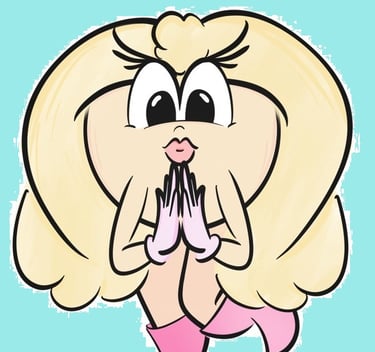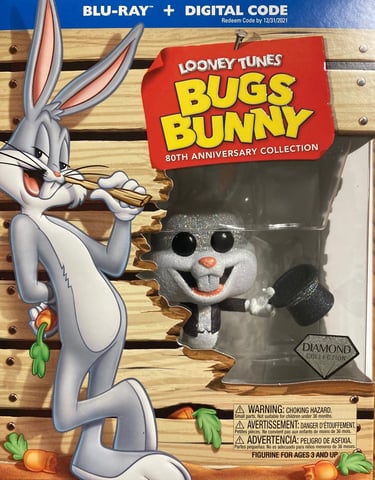Looney Tunes: Bugs Bunny 80th Anniversary Collection
Genre: Slapstick and Gags
Studio: Warner Bros. Animation
Release Date: Dec. 1, 2020
Commercial art rarely transcends its era, created more for quick consumption than endless, timeless appeal. Howdy Doody, Gumby, Max Headroom, Eureka’s Castle, even Ronald McDonald…these once widely-recognized properties are now specters of a bygone time, clinging to dwindling nostalgia as future generations shrug with indifference. The golden age of animation is no different; for every Mickey Mouse or Tom and Jerry, there’s a Betty Boop or Felix the Cat. The former are still beloved or at least retain some fragment of the public zeitgeist. The latter are left, at best, to niche aficionados who strive to keep their flames alive.
And Looney Tunes, at this present time, teeters between the two extremes. Sure, most still know Bugs Bunny and Daffy Duck. Probably the Tasmanian Devil and the Road Runner. Maybe Sylvester and Tweety. But what about Foghorn Leghorn? Or the recently cancelled Pepe Le Pew? Thirty years ago, all of these characters were heavily watched and beloved, thanks in part to a Saturday morning cartoon show on ABC, plus more slots on Nickelodeon and the Cartoon Network. But in the intervening years, the characters have since been dismissed, long removed from the now content-rich Nickelodeon and Disney-owned ABC. Indeed, the late ‘90s and early 2000s were years of uncertainty for the cartoon stars, their Warner Bros. overlords seemingly uncertain what to do with them. And while the characters languished, kids found SpongeBob Squarepants. The Fairly OddParents. Phineas and Ferb. Gravity Falls. Adventure Time. And anime. Lots and lots of anime. So much competition arose, in fact, that the Looney Tunes material that did appear—Cartoon Network’s Duck Dodgers and The Looney Tunes Show, for instance—made little difference with the public consciousness. A situation not helped by the properties’ isolation to a single channel.
So, why the history lesson? Because this latest Blu-ray collection of Bugs Bunny shorts, fittingly coined the Looney Tunes Bugs Bunny 80th Anniversary Collection, comes in the midst of the rather somber reality described above. What should be an elaborate, celebratory mix of the rabbit’s greatest hits and rarely-seen sleepers, feels more like a wistful retrospective of a bygone heyday—although not intended, this is an anniversary more akin to a retirement party.
It’s certainly not Bug’s fault, of course. The cartoon shorts contained here (59 in all, plus numerous extras) are restored to perfect form, with 23 being first-time home releases. No censorship, either; in one Western-themed cartoon (Wild and Woolly Hare), an American Indian gets blasted (comically) off-screen by Yosemite Sam. This could have been easily edited out to appease the easily offended, but fortunately, the preservationists prevailed.
The cartoons, predictably, are also quite amusing—the wellsprings from which modern animation theory obviously derives. But fans expecting a compilation of the Bunny’s brightest, most memorable toons might be left a little perplexed, for these aren’t all his best. This is a set intended more for the enthusiast wanting access to the star’s more obscure offerings than the fan wanting a cherry-picked list of greatest hits. Those hoping to see Bugs triumph over Witch Hazel or outmaneuver the Tasmanian Devil will have to seek other collections. Even the famous “Hunting Trilogy” (in which Daffy gets hilariously outsmarted by Bugs over and over again) gets short-shrifted here despite there being a documentary dedicated to these three very cartoons. Only the first—Rabbit Fire—is available to watch. A looney and inexplicable decision.
And documentaries like this are sprinkled everywhere on the collection’s three discs, including a particularly anachronistic one celebrating Bug’s 50th anniversary; filmed in 1990, it’s filled with the likes of Chevy Chase, Bill Murray, and other comedians either praising or talking smack about the rascally “actor.” It’s good fun that unavoidably glazes the rest of the collection with a bittersweet veneer. Back then, Bugs truly was a superstar, commanding easy media attention and even “appearing” at the 1986 Academy Awards and other pop cultural events. Today, just a few decades later, the bunny is more figurehead than influential figure as viewers clamor not for more Bugs, but more Rick and Morty. More Archer. More Homer Simpson. Even, maybe…more Mickey Mouse.
But being a figurehead is better than being dead. And, as seen in HBO’s "Looney Tunes Cartoons" series, the rabbit is far from done. The new show returns the merry gang to their early ‘40s manic and elastic roots, a time in which even the most conservative character was an unapologetic screwball. Bugs gets the same treatment, losing the more measured, sophisticated touch of 1950s Chuck Jones for the bombastic, spastic lunacy of early Bob Clampett or Tex Avery. Several of these shorts are provided here, offering a nice contrast to their vintage counterparts.
And for what they are, they’re good. A few, like Harm Wrestling, Grilled Rabbit, and Vincent Van Fudd are full of clever, rapid-fire gags, some building on classic tropes while others are altogether original. The artwork is also convincing, if a bit too digitally clean, mirroring the equally sublime Cuphead cartoon in both quality and old-timey styling. Problem is, when viewed as a whole, the individual cartoons don’t feel truly authentic, even for the era they’re supposed to be replicating. Bugs and his cohorts were never quite this edgy--quite this garish--with their overwrought, spastic expressions and nigh-psychotic maneuverings. The denizens of this weird mirror-world owe as much to Ren and Stimpy as they do Merry Melodies, veering dangerously close to the former’s up-close and gross, shock-a-second approach. Some will deem this an appropriate, necessary change for characters incorporated and homogenized over the last eighty years; others will just see it as sacrilegious. It’s Bug Bunny, but not really Bugs Bunny. It's a strange facsimile thereof.
Times have gotten harder for Bugs and, really, for Warner Bros. in general. It’s unclear whether the rabbit will ever reclaim the top-tier status he once so effortlessly enjoyed—when he was more recognized than Garfield, Mickey, even Super Mario. But if he’s less celebrated, that doesn’t make him less amazing. He might not be an unequivocally household name anymore, but he deserves to be, his best toons timeless in their craft and execution. Bugs is funnier than Mickey, more dynamic than Mario, less derivative and pandering than Garfield. He’s pure versatility.
Bugs is the everyman and winner born in a rabbit, a reluctant hero imbued with a shrewd awareness both his foes and fans wish they could match. He’s the rags-to-riches champion people dream to become. A character greater than himself; a hero that can never be entirely squelched. An unflagging icon whose work lives on in collections like these, satiating the faithful while, in the background, he prepares for an inevitable comeback.
The Michael Jordan of the cartoon world, one might say. A legend who feels like a friend.
Buy the set!--D
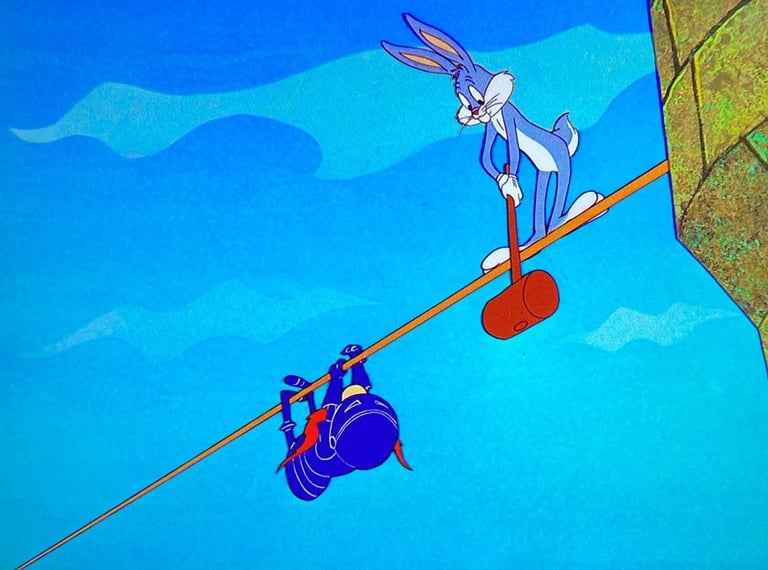

(To the Left) Knighty Knight Bugs, the bunny's one and only Academy Award winner, is thankfully included on the set. (Below) What's Opera, Doc is also featured, featuring Bugs at his most iconic and dramatic.
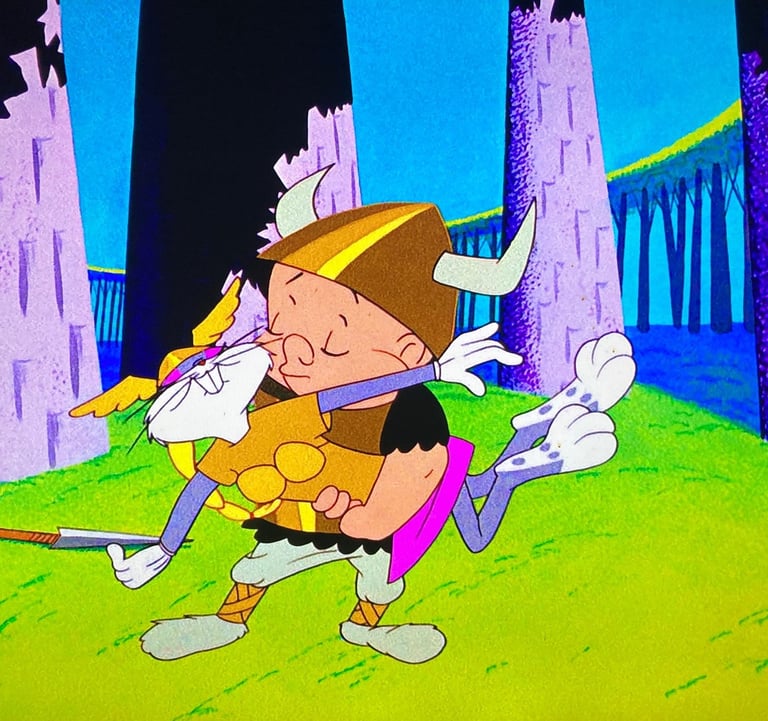

Oddly, only Rabbit Fire is offered from the famously funny "Hunting Trilogy." This is a real, inexplicable shame.
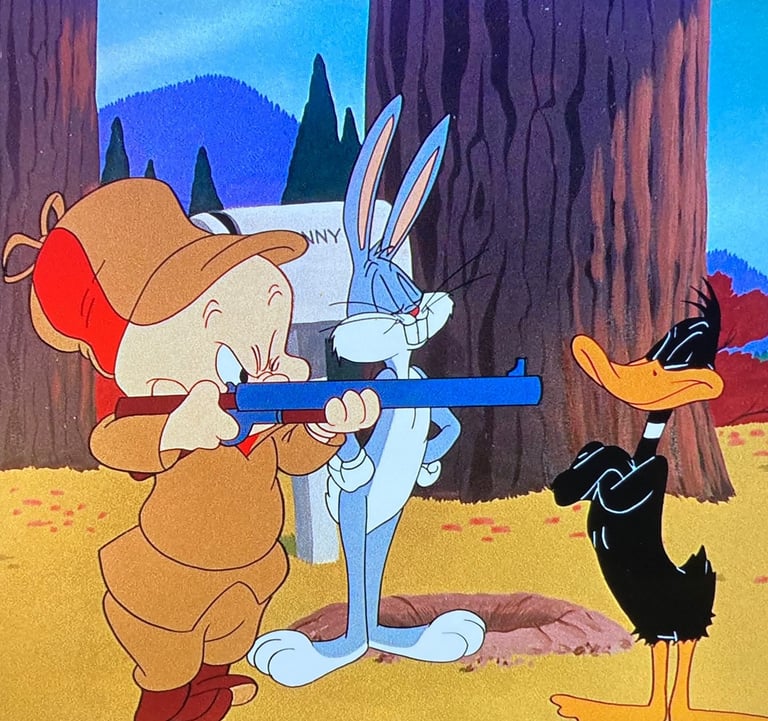

Haredevil Hare, Marvin the Martian's first appearance, is happily included.

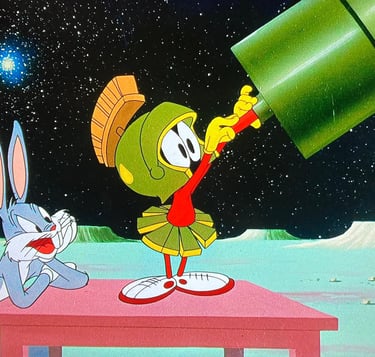
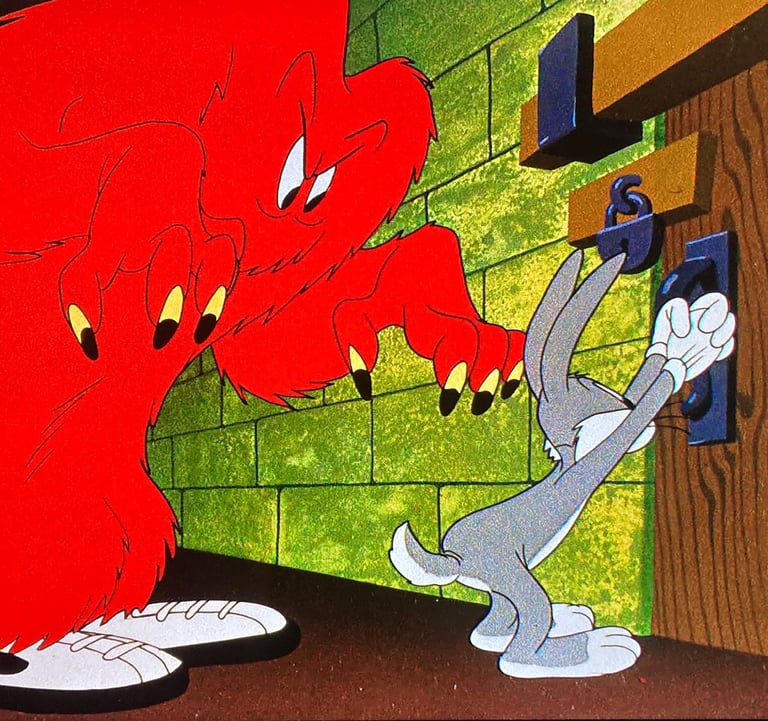

Hair-Raising Hare (top) and Bugsy and Mugsy (bottom) make the cut. Both depict Bugs at his absolute best.
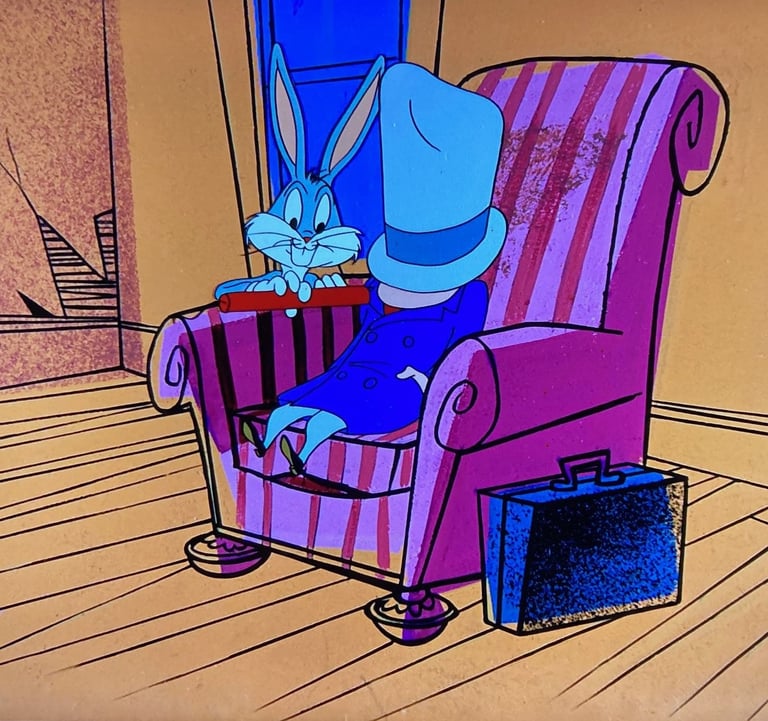

These four snapshots are from of the new "Looney Tunes Cartoons" series on HBO Max, which began airing in 2020. Although the series is entertaining, its humor relies, in part, on the shock-schlock-style visuals shown here--a much more contemporary trend. Would Chuck Jones, Friz Freleng, and the other forefathers approve?


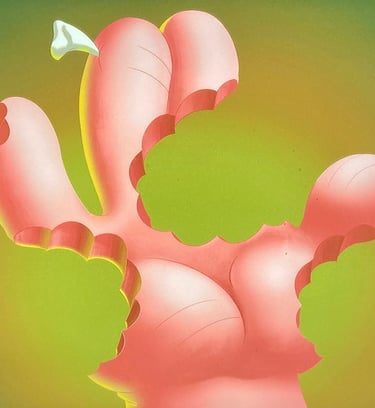



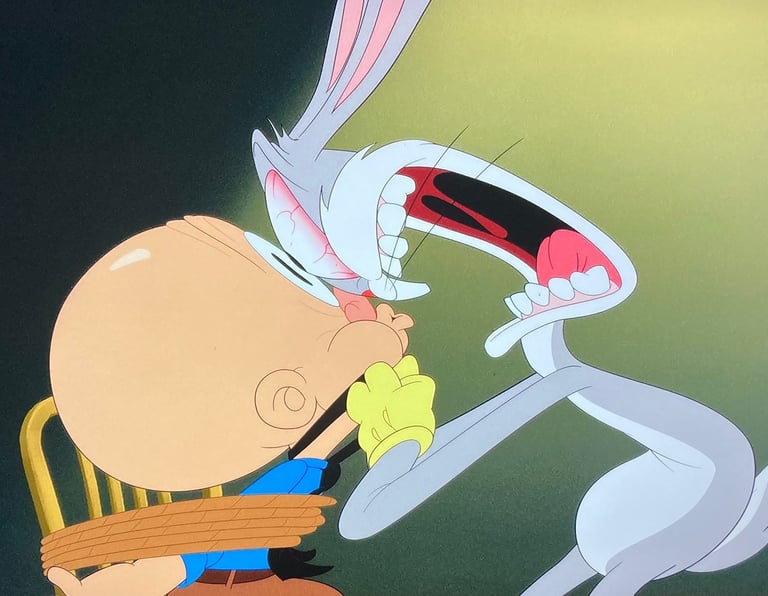

The art style is not unlike the popular Cuphead series (below) on Netflix, but with edgy, Ren and Stimpy influences.

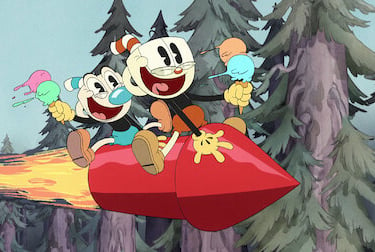
Contact: lostnostalgiaproductions@gmail.com
Website: www.lostnostalgia.com
Like what we're doing? Please consider throwing us a dollar into our Patreon page's tip jar!
